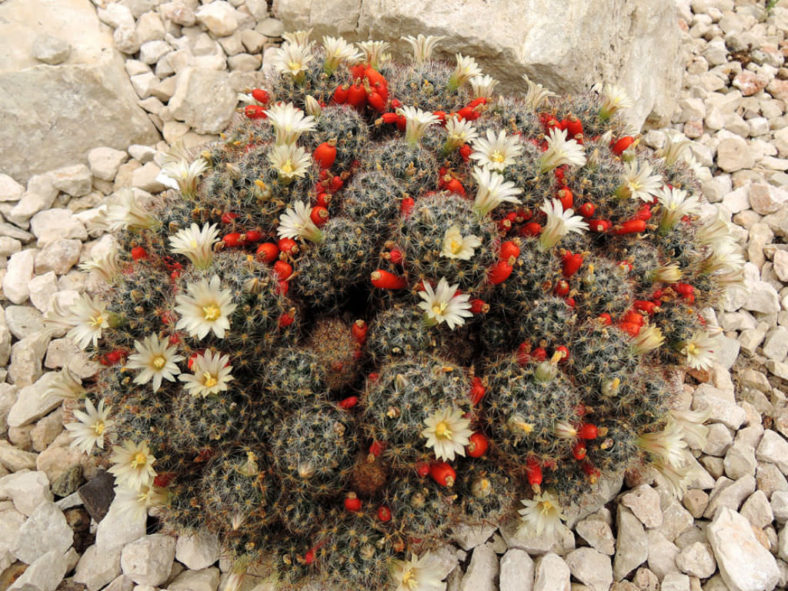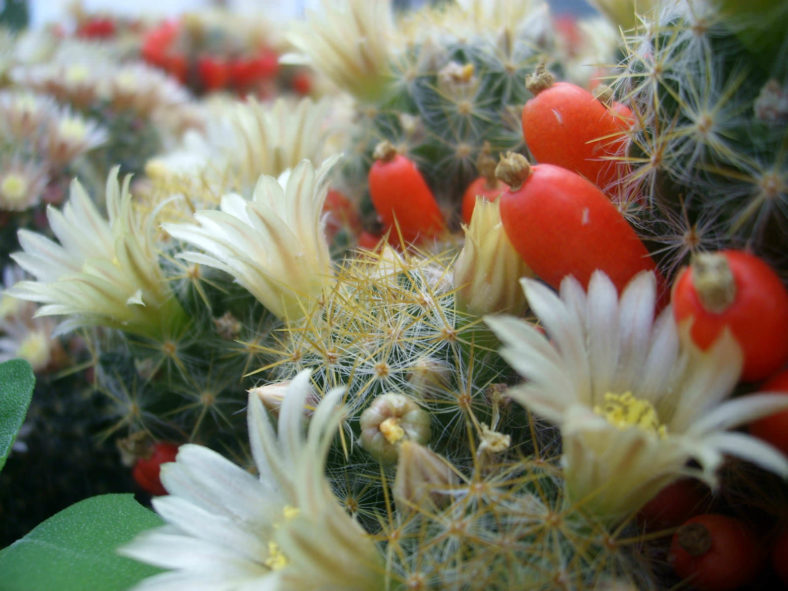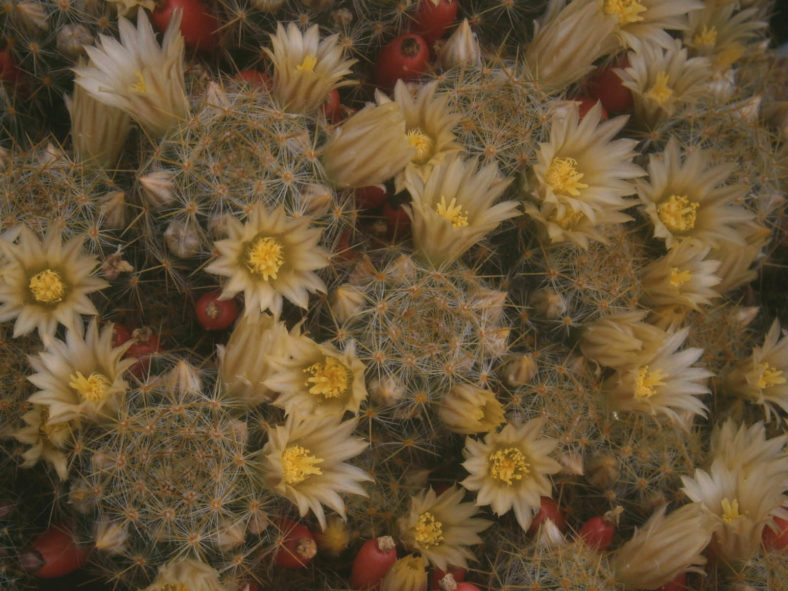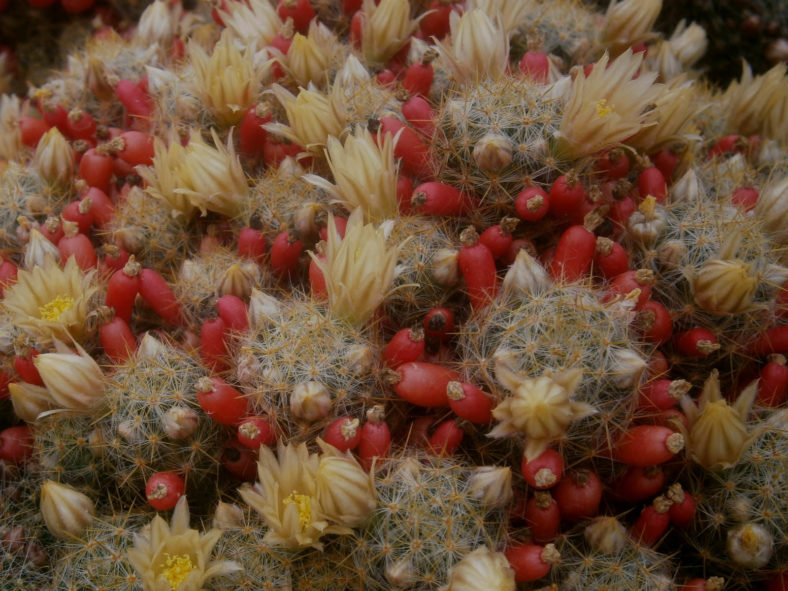Scientific Name
Mammillaria prolifera (Mill.) Haw.
Common Name(s)
Little Candles, Silver Cluster Cactus, Strawberry Cactus, Texas Nipple Cactus, West Indian Nipple Cactus
Synonym(s)
Cactus proliferus, Neomammillaria prolifera
Scientific Classification
Family: Cactaceae
Subfamily: Cactoideae
Tribe: Cacteae
Subtribe: Cactinae
Genus: Mammillaria
Etymology
The specific epithet "prolifera" (pronounced "pro-LEEF-er-uh") means "proliferous" and refers to the vigorous production of offsets of this species.
Origin
Mammillaria prolifera is native to Texas, Mexico, Cuba, and Hispaniola.
Description
Mammillaria prolifera is a low-growing cactus that forms a dense clump of dark green, globose to cylindrical stems with conical to cylindrical tubercles, each with a cluster of spines at the tip. The stems can grow up to 3.6 inches (9 cm) tall and 2.8 inches (7 cm) in diameter. Each areole bears 25 to 40 radial and 5 to 12 central spines. The radial spines are hair-like, white or yellow, measuring up to 0.5 inches (1.3 cm) long, while the central spines are needle-like, white or yellow to reddish with a darker tip, measuring up to 0.4 inches (1 cm) long.
The flowers appear in spring. They are yellowish-white, cream-colored, or pinkish-yellow, with a brownish midrib, and can reach a diameter of 0.8 inches (2 cm). The fruits are scarlet, club-shaped to cylindrical, and can grow up to 0.8 inches (2 cm) long.

Subspecies of Mammillaria prolifera
- Mammillaria prolifera subsp. arachnoidea
- Mammillaria prolifera subsp. haitiensis
- Mammillaria prolifera subsp. prolifera
- Mammillaria prolifera subsp. texana
How to Grow and Care for Mammillaria prolifera
Hardiness: USDA hardiness zones 9b to 11b: from 25°F (-3.9°C) to 50°F (10°C).
To encourage better flowering, allow the plants a cooling period in winter and suspend watering. Unlike many other cacti, which use their ribs as storage devices, Mammillaria feature raised tubercles, from which spines emerge. When you water, the tubercles expand to increase water storage. The flowers appear from the axils of these tubercles on the previous year's growth, which accounts for their interesting halo effect. The cactus mustn't be exposed to prolonged dampness or standing water. Never let your cactus sit in a dish of water. Lastly, ensure to fertilize during the growing season for the best results.
Repot as needed, preferably during the warm season. To repot Mammillaria, ensure the soil is dry before repotting, then gently remove the pot. Knock away the old soil from the roots, removing any rotted or dead roots. Treat any cuts with a fungicide. Place the plant in its new pot and backfill it with potting soil, spreading the roots out as you repot. Leave the plant dry for a week or so, then begin to water lightly to reduce the risk of root rot.
See more at How to Grow and Care for Mammillaria.
Links
- Back to genus Mammillaria
- Succupedia: Browse succulents by Scientific Name, Common Name, Genus, Family, USDA Hardiness Zone, Origin, or cacti by Genus
Photo Gallery
Click on a photo to see a larger version.


